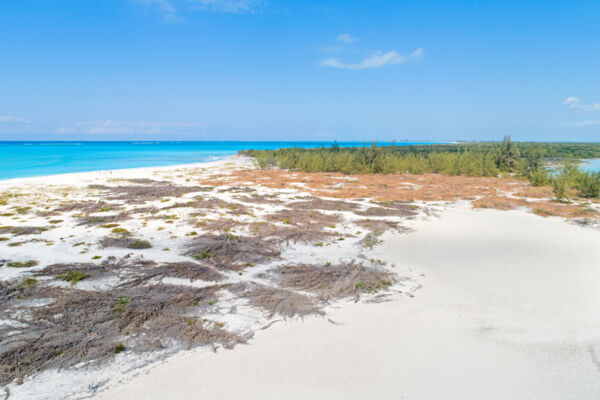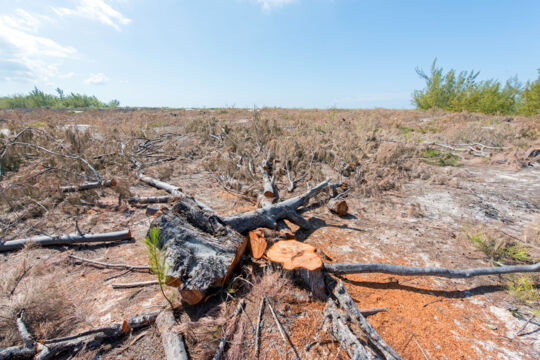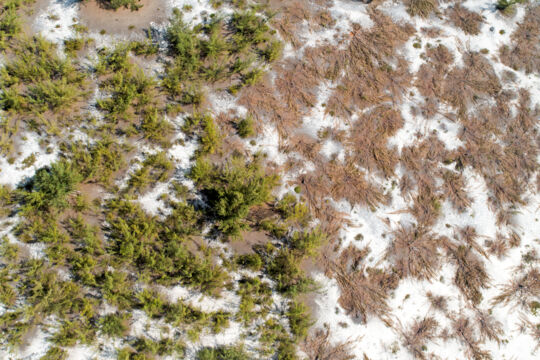Casuarina
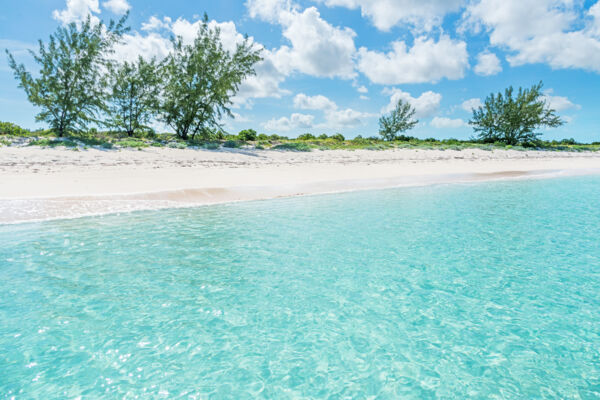
Casuarina is a genus of tree that is originally from Australia and the southern Pacific, yet that is now invasive throughout much of the Caribbean, the Bahamian archipelago, and Florida. The tree is known by many names, including Australian pine, she-oak, and cedar. The Casuarina equisetifolia variety is the most common type of this invasive tree in the Turks and Caicos and the Bahamas.
While casuarinas have similarities in appearance with pines, they have a different scientific classification and are not part of the pine family. Casuarinas belong to the evergreen Casuarinaceae family of flowering plants. Similarities in appearance to true pines include the casuarina's needle-like branchlets and its seeds, which are similar in appearance to small conifer pine cones.
In the tropical Atlantic, casuarinas are typically found in coastal areas, and particularly on windward beaches. The trees are highly tolerant of salt, and can essentially grow in environments directly exposed to ocean water. Casuarinas tend to be very competitive in disturbed coastal environments, and will often be the first vegetation to emerge (as is often apparent on accreted coastal land). There are many examples of sites in the Turks and Caicos where dredging deposit sites and cleared coastal areas have become saturated with casuarinas.
| Casuarina | |
| Common name | Australian pine she-oak cedar whistling pine |
| Binomial name | Casuarina equisetifolia |
| Global conservation status | Least concern |
| Conservation status in TCI | Invasive throughout TCI |
| Distribution in TCI | Common |
| Mature height | 60 feet (18 m) in TCI |
One of the most impressive examples of casuarina growth was Half Moon Bay and Donna Cut between Little Water Cay and Water Cay. Almost the entirety of Half Moon Bay did not exist in 1960, when Hurricane Donna completely washed away and eroded a wide channel between the two islands. This channel, Donna Cut, began to fill in, and completely closed off around 1994.
Aerial images taken in the later 60s, 70s, and 80s show little vegetation reclamation of the accreted dune until the 90s, when casuarinas became established. Over the next three decades, the trees quickly expanded to the scale of saturating about 55 acres (22 hectares) of the bay. Today, most of the casuarinas have been removed as part of an invasive species removal project to support the regrowth of important Turks and Caicos rock iguana food source plants.
Two similar situations are an artificial island created from the material dredged from the Bellefield Landing channel near North Caicos, and the artificial Star Island created in the Princess Alexandra National Park. Both islands have seen a rapid expansion of casuarina.
Casuarina tend to have a very mixed reception in the Turks and Caicos and other Caribbean islands, as they are often the largest trees around and provide welcome shade. However, there are often environmental concerns regarding the displacement of native vegetation.
Extent in Turks and Caicos
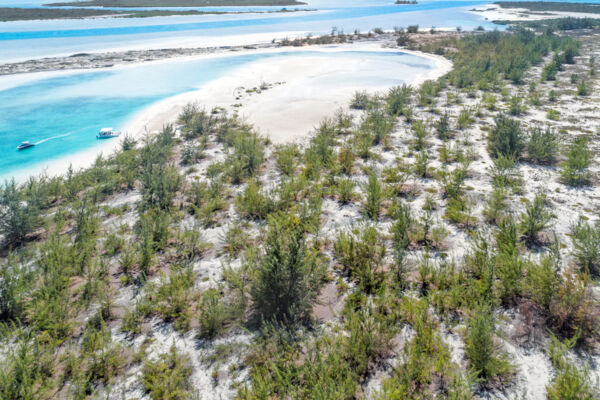
In the Turks and Caicos, casuarinas tend to be found on coastlines that are exposed to the eastern trade winds, especially on flat beaches that are sheltered to some extent from the open ocean swell. It’s estimated that about 30 miles (48 km) of beach coastline in the country has mid to heavy saturation levels of casuarina. Notable examples include Bay Cay and East Bay Cay in the East Bay Islands National Park, and Bambarra Beach and Wild Cow Run on Middle Caicos.
Casuarinas are also common in historical communities and settlements, where relatively few trees, often of impressive stature, provide some shade.
Removal of Casuarina
The Turks and Caicos National Trust has taken the lead on the control of casuarinas in the Turks and Caicos, primarily due to concerns of habitat loss for the Turks and Caicos Islands rock iguana. Much of the diet of these iguanas is plant based, and can consist of small fruits, flowers, thatch palm seeds, and the leaves of various plants. Casuarinas typically displace all other flora, leaving dead zones where there is very little forage potential for the iguanas. Research and fieldwork headed by the San Diego Zoo on islands such as Long Cay near South Caicos has shown that iguana populations can be closely tied to the vegetation on the cays they are present on, and that drought and habitat loss has a direct effect on populations.
There is also concern that casuarinas increase erosion and coastline loss. This is due to their root structure and depth, which is quite shallow when compared to flora such as the sea oat (which has a denser and deeper root system). In sandy and dune coastal environments, high tides and atypical wave action can rapidly undercut beaches and dunes where casuarinas are present.
Management of Casuarina Trees
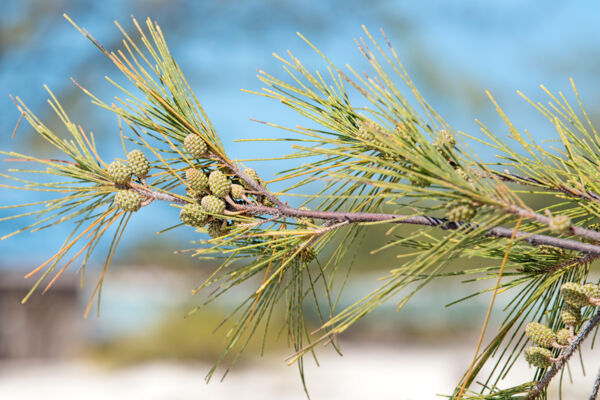
In the Turks and Caicos, the Turks and Caicos National Trust—with direct support from the Royal Society for the Protection of Birds (RSPB) in the United Kingdom—has developed an effective process to control casuarinas in a coastal setting, simply by cutting trees with chainsaws to the point that most material can be moved and stacked by hand, stacking cut brush and logs so as to allow native vegetation space to recover, and then treating the cut stumps with an herbicide to prohibit regrowth. This work has been permitted and supported by the Department of Environment and Coastal Resources (DECR), which is the Turks and Caicos governmental department that oversees protected areas and coastlines.
The Turks and Caicos National Trust's formula for casuarina management has been quite successful, and the invasive trees continue to be cut by volunteers. It’s hoped that the entirety of Half Moon Bay will be cleared of casuarinas.

